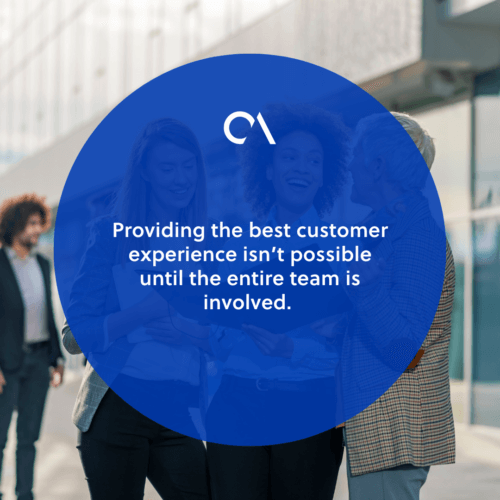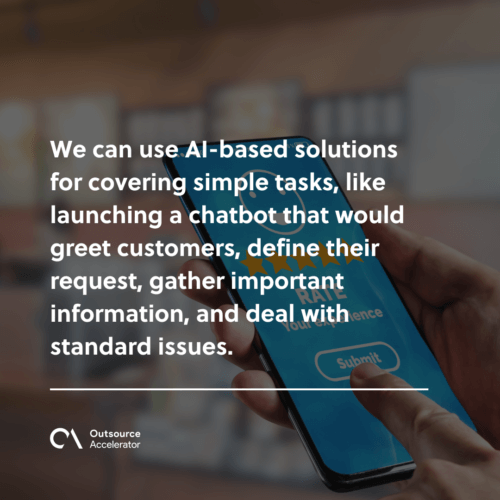What do customers expect from brands in 2025?

This article is a submission from SupportYourApp. SupportYourApp is a Support-as-a-Service company that provides secure technical and customer support for growing startups and tech companies around the globe.
Over the past two years, as a post-pandemic reality was established, businesses needed to adjust their strategies according to new consumers’ expectations.
Customer experience has become a new top priority, as customers now expect a lot in terms of personalization, communication, and availability. We offer you taking a closer look at what consumers generally expect in 2024 and how brands can meet those expectations.
What customers can expect from brands in 2025
Customer experience first
According to Gartner, 89% of brands are already prioritizing customers’ digital experience. Both large players and small companies invest in it to stay ahead of the competition.
At the same time, businesses must be aware of tech trends and create technology-driven solutions for deeper and more effective communication with customers.
Keeping customer-centric mindset at each stage
Providing the best customer experience isn’t possible until the entire team is involved. First, any product should be created with a customer’s needs in mind.
For software, it means making it understandable and improving its usability, for hardware — affordability, user-friendliness, and a simple installation process.
Each company department or team should follow the same methodology. Recruiters should aim to hire people with a customer-centric approach. Developers should keep their users in mind and understand what they may expect from the service or application. Customer support specialists should assist in the best way and aim to leave customers with positive impressions.

Providing personalized experience
Customers don’t like to be divided into categories, they want companies to treat them as individuals and understand their specific needs and preferences.
Targeted ads, tailored messages, personal recommendations, adjusted feed — everything should work for a unique experience. McKinsey & Co’s research shows that today, personalized experience is no longer seen as a competition advantage — it is a default option customers expect from brands.
In this process, no details are too small. Knowing a customer’s preferred communication channel, keeping complete interaction history, using customers’ first names whenever possible — these are all important elements of a great individual experience.
Prioritizing customer satisfaction
Today, customers rarely deliver their complaints to the brands — only about 4% of them are ready to express their dissatisfaction directly. Most of them just leave after a couple of bad experiences, or even after a single one.
To improve customer satisfaction rate, we need to take strategic actions for delivering a better CX, but also never forget to ask for feedback and take actions on it.
If a company is lucky enough to at least get a negative review, a responsible manager should contact the customer who left it and suggest a positive resolution.
Speeding up service processes
In each market, the competition is so intense that businesses that manage to deliver instant satisfaction and provide quick services without losing quality, have a huge advantage.
The world is moving insanely fast, and customers actually want to get everything here and now. Expectations from online services and communication with brands are especially big.
About 60% of customers may hang up the phone if they need to wait on hold for just one minute, and with chat messaging, people mostly expect to get instant answers. To avoid dissatisfying our customers, we need to define peak hours and engage more staff during them, and also consider automated solutions to run processes faster.
Providing customer satisfaction with tech solutions
Omnichannel opportunities
It is crucial to be wherever our customers need us. Everyone has a preferable communication channel — from phone calls to WhatsApp messages. In 2025, covering as many of them as possible is a must.
For example, about one in three consumers prefer to get in touch with brands on social media. If a company only offers emails and calls as a communication channel, its customers may choose competitors as more accessible.
At the same time, the omnichannel experience should remain seamless. When customers move from one channel to another, they expect company representatives to know their communication history.
All communication options should be combined and organized into a single, solid system to track all interactions.
Combining digital solutions with a human touch
In 2024, we are pretty much used to automating and digitizing business processes. One of our biggest continuing challenges would be harmonizing machines and humans.
Automated solutions are a key to saving costs and speeding up any service, but they may also not align with customers’ expectations. Here’s an example of how a company can combine people’s skills and digital abilities in customer support.
We can use AI-based solutions for covering simple tasks, like launching a chatbot that would greet customers, define their request, gather important information, and deal with standard issues.
At the same time, professional support agents would jump in and deal with complex and irregular requests. Also, knowing that 9 of 10 customers don’t really like talking to a machine, they should always have an opportunity to switch from an automated solution to communicating with a live person.

Offering self-service options
Having a live communication option is good, but an ability to resolve issues themselves is even better for our customers.
Self-service portals, FAQ pages, and user-friendly troubleshooting solutions are an essential part of services in 2025. We need to make sure a self-service portal would be really helpful, which means informative and understandable, easy to find and use, relevant and up-to-date.
While creating a knowledge base for it, we should make good use of a support team’s experience, as they have deep knowledge on customer’s needs and questions.
Final thoughts
To sum it up, in 2025, we are mostly going to observe consolidation of existing trends from the last couple of years.
But our main task is still to anticipate our customers’ needs, be dynamic and flexible, and provide our customers with what they want, without waiting for them to ask for it.
Our proactivity is the key to building long-term relationships with customers that would be beneficial for both parties.







 Independent
Independent




